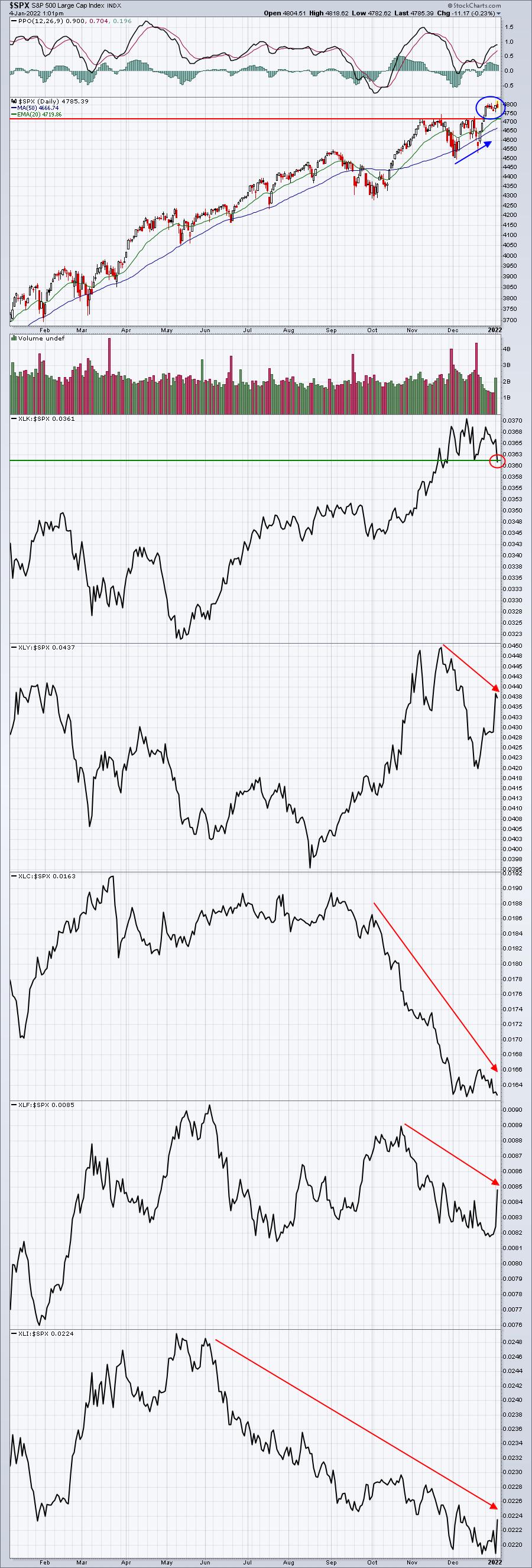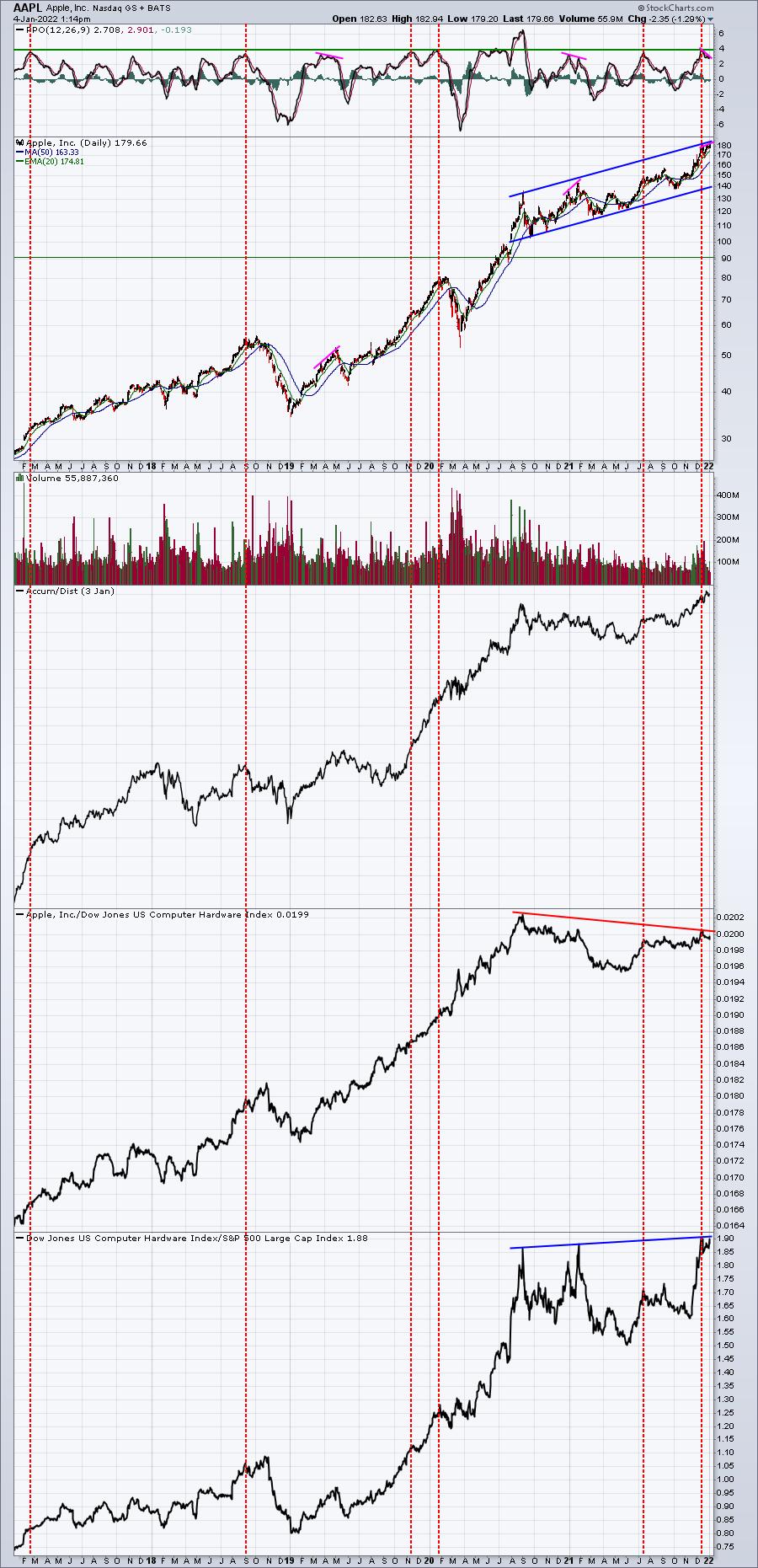Today is just the latest example of the massive divide taking place in U.S. equities right now. There was major rotation throughout 2021 and we're seeing more of the same here in early 2022. Unfortunately, the rotation is not favoring the growth stocks that have powered the stock market higher over the past decade. Value stocks will only carry the market so far as their earnings acceleration is usually dwarfed by growth stocks. But in the current market environment, there is a ton of repositioning taking place on Wall Street and that's temporarily boosting valuations in the value space on a relative basis.
Aggressive sectors continue to weaken on a relative basis and that puts the current rally in considerable danger:

The primary groups helping to lead the rally in 2021 were technology (XLK) and consumer discretionary (XLY). Some would argue that it was energy (XLE) and real estate (XLRE), but keep in mind that these two sectors represent just 2.86% and 2.57%, respectively, of the S&P 500. The XLK and XLY are now struggling on a relative basis as growth takes a back seat. That's scary because these two groups represent more than 35% of the S&P 500. The largest component stock in the S&P 500 is Apple (AAPL), which could be printing a reversing candle today with a negative divergence in play. If that confirms at the close today, AAPL could find that today's selling is just the beginning. Of course, there are never any guarantees, but I'd certainly say the odds of a significant selloff in AAPL shares grow considerably if AAPL finishes weak today:

AAPL has been on a tear and it's held up, along with many other large cap growth stocks, for two primary reasons, in my opinion. Among growth stocks, there probably isn't a more reliable earner than AAPL. It's also a company that likely has pricing power. If inflation turns higher, AAPL likely could raise prices and keep its growth alive and well. That's the bullish argument to stay the course. I'm taking the other side, though, and believe AAPL could see a 20-30% slide from here. We've seen AAPL succumb to selling pressure before. In Q4 2018, it was the trade war. AAPL fell nearly 40% in 3 months. In March 2020, it was the pandemic. AAPL fell 35% in 6 weeks. It happens, even to the best companies. Note that its PPO is very stretched on a daily basis and its relative strength vs. its computer hardware peers has been weakening.
We cannot ignore the fact that AAPL has gained 58% since the last inflation-related selloff from January to March 2021. That selloff was 20% over 6 weeks. A simple pull back to test trendline support near 140 would represent slightly more than a 20% decline. Do you think this isn't possible with inflation worries escalating? I would be extremely careful trading growth stocks right now, even the best of the best like AAPL.
On Saturday, EarningsBeats.com will be presenting our Market Vision 2022 event. It'll all begin at 8:45am ET. For more information and how you can register for this event at no cost, CLICK HERE. On December 31, 2020, the S&P 500 closed at 3756. During Market Vision 2021, I boldly predicted the S&P 500 would rise nearly 1000 points to 4750. Few believed me. It rose slightly more to close 2021 at 4766. I see a WILDLY volatile year ahead. If I'm anywhere near correct, you'll be glad you attended Market Vision 2022. I hope you'll join me and the rest of our acclaimed speakers.
Happy trading!
Tom






